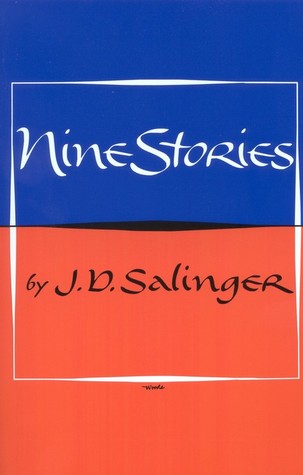


"The lady?' the young man brushed some sand out of his thin hair. In many of his statements Seymour shows that he isn't satisfied with adult awareness, and more subtly mentions them to Sybil. He carefully goes about explaining the situation that angered Sybil, rather than brushing her anger off as a childish nuisance. She questions him and he replies that he pretended Sharon was Sybil. I couldn't do that.I'll tell you what I did do, though,"(13). When Sybil becomes jealous of Sharon Lipshutz for sitting with him on the piano bench, she tells Seymour he should have pushed her off of the piano bench. Seymour seems to understand the pains and struggles of being young. When he speaks of the "Little Black Sambo" he speaks as though he is the same age as her, showing his excitement and surprise with the amount of tigers in the story. He is very sympathetic to her youth and tries to communicate with her in the context of a child. Seymour treats young Sybil with the utmost respect and kindness. We first meet Seymour on the quiet beach of a Miami resort hotel. Seymour shows great sensitivity when communicating with youths, but lacks the ability to communicate with the money-oriented adult world. And the fifteen years it will take you to figure it out.Theme statement: Affluence can foster materialism, thereby creating a life devoid of meaning. Throw in some of the greatest dialogue written in the last fifty years and an adorable four-year-old girl, and you've got a short story that is definitely worth the fifteen minutes it will take you to read. Number two, it calls into question our definitions of words like "sane" and "crazy." (Or, in the words of a cheesy 90s action movie, "What if I told you insane was working fifty hours a week in some office?") When you shift around your perspective a little bit, when you start asking what's really important in life, you start to wonder if maybe we've got it all wrong, and the people we think of as "crazy" have got it right after all.Īt least, that's the question Salinger inspires us to ask. One, it reminds us that there is more to life than clothes, food, and TV. "A Perfect Day for Bananafish" does two important things. If you met someone who didn't give a hoot about any of it, you'd might think he or she was crazy. In fact, it's normal to worry about this stuff. It's easy to get caught up in material pleasures, to worry about what you're going to wear or what you look like or what's going to feel good.
A PERFECT DAY FOR BANANAFISH ANALYSIS TV
What is A Perfect Day for Bananafish About and Why Should I Care?Ĭlothes, cars, video games, food, TV – it's easy to like this stuff. Now that we've thoroughly enticed you, you can get to reading the story already. We won't spoil it for you by giving anything away here, but the story's shocking and perhaps confusing conclusion has left critics debating Salinger's intentions, not to mention the real meaning of the story. "Bananafish" is famous not only as the beginning of the Glass family saga, but also for its highly enigmatic ending. Thus Salinger was launched to fame – long before Catcher in the Rye. The folks at New Yorker were so impressed with the story that they published it immediately and signed a "right of first refusal" for any more of Salinger's stories. The story explores themes of innocence, youth, and spirituality (a reflection of Salinger's growing interest in Eastern philosophy and meditation). In the story, Seymour Glass, just back from his service in World War II, struggles with mental illness while vacationing with his wife in Florida. Salinger wrote "Bananafish" in 1948 when he was still relatively unknown. And it all starts with " A Perfect Day for Bananafish," the story of Seymour Glass, the oldest of the Glass children.

These characters pop up again and again in Salinger's short stories, either as the main characters or as peripheral connections. The Glass family is a fictional creation of Salinger, featuring seven children of staggering intelligence, wisdom, and precociousness. But before the infamous Holden Caulfield came the Glass family – the focus of many of Salinger's most well-known short stories. Salinger is most famous for his novel Catcher in the Rye, published in 1951. A Perfect Day for Bananafish IntroductionĪmerican author J.D.


 0 kommentar(er)
0 kommentar(er)
